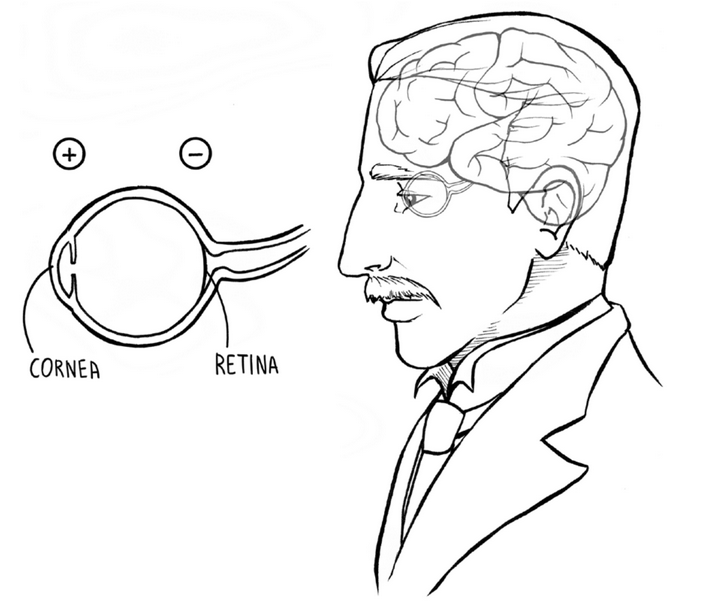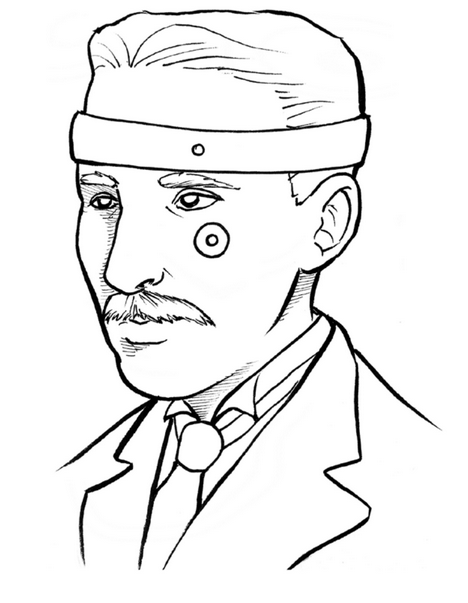
Electrooculography (EOG): Measuring Eye Potentials

Explore how your eyes generate tiny voltage changes as you move them, revealing the hidden signals behind your gaze.
About experiment
What Will You Learn?
• How to measure the steady voltage difference across your eyes.
• How eye movements (left/right and up/down) and blinks create detectable electrical deflections.
Background
Our brain not only controls our arms and legs—it also directs two powerful cameras that capture the visual world around us: our eyes. In this experiment, we will explore eye movements using electrooculography (EOG). The cornea is naturally more positive than the retina, making the eye an electric dipole. When you move your eyes, the orientation of this dipole changes, producing a measurable electrical deflection known as the electrooculographic signal. By positioning electrodes on either side of the eye—or above and below—it’s possible to detect left/right movements, vertical movements, and even blinks.
Procedure

Electrode Preparation & Placement
Electrode Placement for Lateral Movements:
- Place your BYB headband so that two electrodes rest on either side of your eyes.
- Apply a small amount of electrode gel under the metal patches to ensure a solid connection.
- Stick a ground electrode (sticker) on the mastoid process—the bony bump behind your ear.
Connections:
- Clip the red alligator clips to the electrodes on either side of the eyes (exact sides don’t matter for a first trial).
- Attach the black alligator clip to the ground electrode.
- Plug the electrode cable (orange connector) into the SpikerBox.
Setup & Noise Management:
- Connect your SpikerBox to your recording device. To minimize interference, keep your laptop or tablet a short distance from power outlets and fluorescent lights, and run on battery power if possible.
- Open SpikeRecorder. In Settings, enable the notch filter: choose 60 Hz in the US and most of the Americas, 50 Hz elsewhere.
Record Lateral Eye Movements:
- Click Record in SpikeRecorder.
- With the help of a friend or by self-monitoring, move your eyes to the left, then to the right. Observe the deflections in the EOG signal as you change direction.

Recording Vertical Movements & Blinks:
- Reposition the headband so that one electrode sits above your eye and another below it.
- Secure the ground electrode behind your ear again.
- Record as you move your eyes up and down and when you blink. Compare the waveforms—blinks often produce sharp spikes, likely from eyelid-muscle activity.
Data Saving & Analysis:
- Open your recordings in SpikeRecorder to measure features such as the amplitude and timing of deflections produced by different movements.
- Analyze polarity shifts and see whether you can clearly distinguish eye movements from blinks.
Results & Analysis
Further Investigation Ideas
- Interface Applications: Could you create an interface—perhaps a video-game controller—that uses EOG signals? What challenges might you face when translating these analog signals into digital commands?
- Electrode Placement: How does shifting electrode positions (closer to or farther from the eye) affect the signal you record?
- Movement Parameters: Does the amplitude of the EOG change with the distance or speed of an eye movement?
Additional Factors: Do variables such as eyelid tension (squinting vs. eyes wide open) or wearing glasses influence the EOG signal? Why might that be?